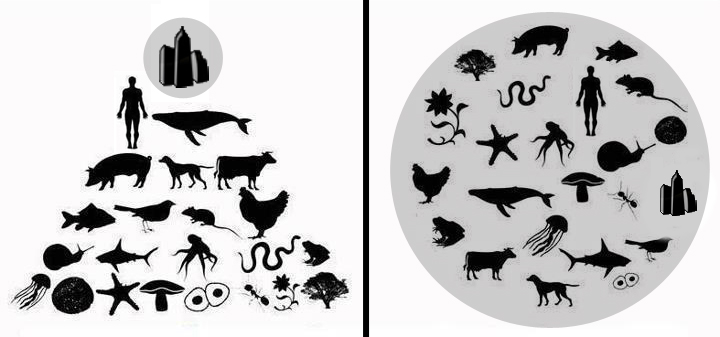‘Human intelligence is only one measure to evolutionary success.’
Steven Johnson brings us into emergence by looking at the swarm logic of the ants. In the ant colonies we can observe how abounding elements can construct a complex yet efficient system. The main aspect of the emergent system of the ant colonies is the local and adaptive action of the ants, from the local information they get from each other through their pheromones, which collectively lead to global behavior. It is a bottom up system which macro-intelligence is mainly derived from micro-knowledge of the constituents. Johnson concludes that such system has its complexity built up from various simple elements, and it is crucial that the simple elements are responsive to the right amount and quality of interaction with each other. From the principles that run the swarm logic Johnson explains how the cells in our body emerge from the embryo stage and eventually form a full organism and still develop overtime (in this case the cells interact through the cell junctions).
Cities behave based on the same principles, human as the constituents. We might not be conscious about us being the ‘brainless ants’ in the city, but the cities are shaped from the ‘swarm behavior’ of us. We, as herd animals, respond to the information we get from our surroundings, be it verbal or physical or atmospherical. Though we are conscious in decision making, in a long span of thousands of years those decisions contribute to a macro-development. We constitute the development of the city from the most fundamental interaction between people at the sidewalks, just as the ants exchange information through their pheromones, just as the cells detect each other through the cell junctions. It is the unspecialized intelligence from such interactions that builds up the strength of the city.
After all we are just as small as the ants, as tiny as the cells ![]()
Though ‘emergence’ is a phenomenon that gives an analysis of the nature of complex systems, I also see it as a possibility to improve the cities. With the convenience of automobile in the modern era, which means less use of sidewalks, the interaction between people has been reduced. This has resulted on the mallification of some cities nowadays, deserted sidewalks, public spaces being used for private retail shops, etc. By understanding that interaction is crucial for the emergent structure of a city we should start to enhance the quality and frequency of use of the public spaces and appreciate such platform that creates the opportunity to interact between people.
Possible topic
I have been very intrigued by the fact that many elements in this huge ecosystem share the same patterns and phenomenon to achieve an effective system. However we have been disconnecting us and our living spaces to the surrounding as the convenience of the technology often makes us behave unnaturally. I would like to research more on the patterns that we share with the other organisms and how we could improve our cities from learning from the most ‘normal’ nature.
picture source: http://www.blogcdn.com/www.lemondrop.com/media/2010/04/minimen-watermelondig.jpg


